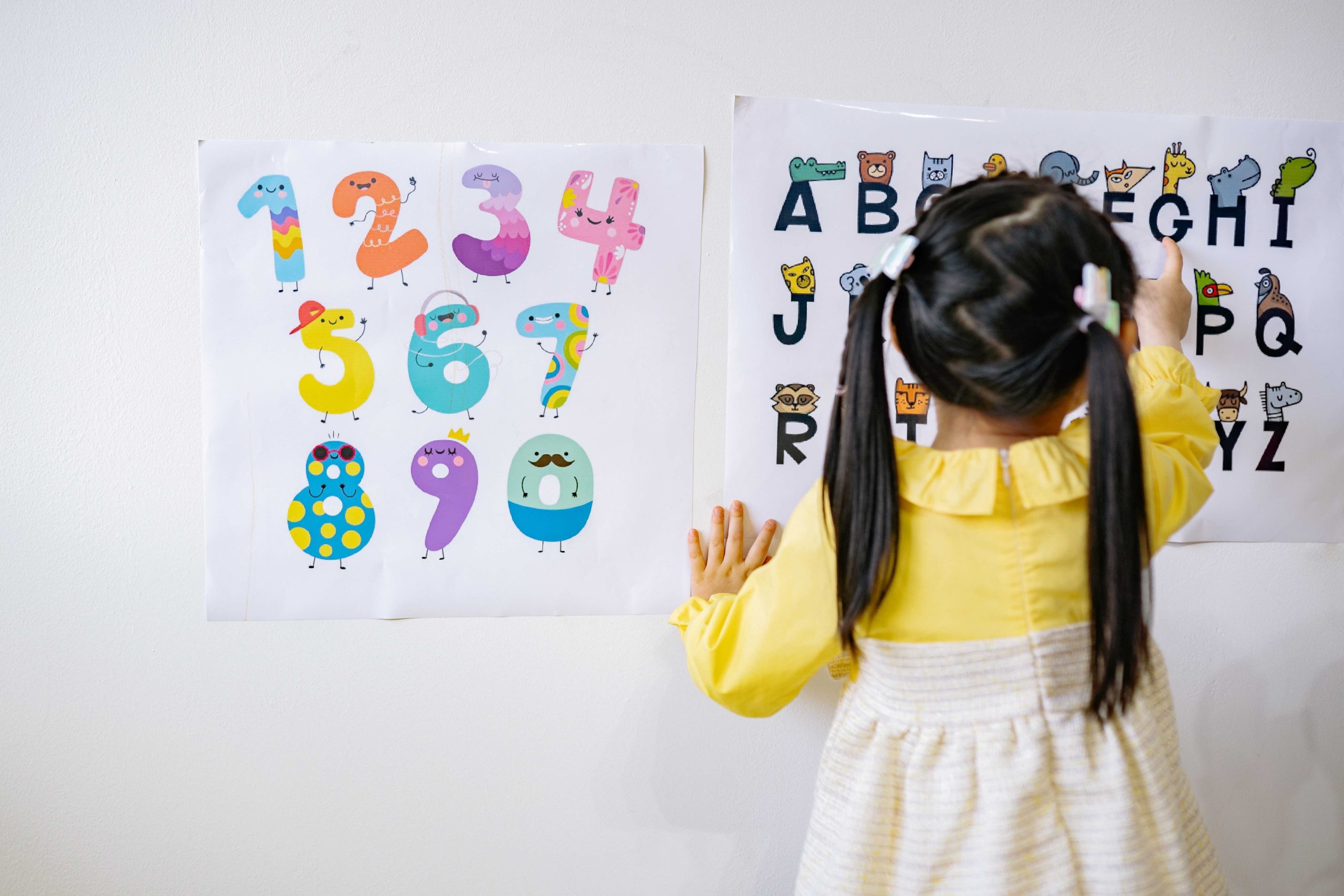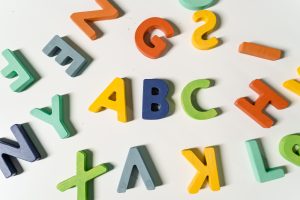- Check for Gaps in Alphabet Knowledge
When a child has reading difficulties there are often gaps in their knowledge. It’s easy to assume that a child has a good grasp of their alphabet knowledge because it’s already been covered at school at an earlier time.
Getting to the heart of reading difficulties must include going back to the basics to ensure a strong foundation in alphabet knowledge has been laid. This enables any confusion between letters, and letter sounds to be identified and corrected at this level before moving on.
Multi-sensory approaches to teaching alphabet knowledge are an effective way to help dyslexic students process and retain this information. There are a number of multi-sensory approaches that can be used including visual – ie using pictures to remind a student of a letter sound, learning through song, using actions and movement to represent letter sounds, making letters out of clay etc. - An Understanding of the Alphabetic Principle
When children learn to read, they also learn about the connection between written words and our spoken language and how speech sounds, make up the words we speak, read and write.This is called the Alphabetic Principle and plays an important part in the learn to read process and forms the bigger picture view of how words work and why.
The dyslexic student who has been learning to read and is experiencing difficulties, may not fully grasp this information. Don’t just assume the student already knows just because it’s already been taught in school.
It’s important to check a student’s understanding of this information as it may have been missed, misunderstood or unable to be retained. Dyslexic students like to understand how the bigger picture works and this needs to be explicitly explained in a way that makes sense to them. The Alphabetic Principle helps the student to see the bigger picture when it comes to the system of reading. - Explicit and Systematic Instruction
Explicit and systematic instruction has been found to be an effective approach to teaching dyslexic students to read. This type of instruction means that each step is overtly taught, examples are provided, and that lessons and activities have been broken down into sequential and manageable steps which progress in a logical order from simple to more complex concepts. - Multi-Sensory Reading Instruction
Phonics is considered one of the most effective methods of learning to read, however, children with dyslexia often find phonics instruction particularly difficult to master.
Structural differences in the dyslexic brain suggest that children with dyslexia process language in a different way.
Fortunately, there is more than one way to learn phonics. Programs that offer multi-sensory approaches to learning have been found to be effective in helping dyslexic students learn to read.
Visual Phonics is a multi-sensory teaching tool that has the potential to improve reading outcomes by engaging more than one sense at a time during instruction. - Dual Code Learning
Dual Code Theory was first proposed by Psychology Professor Allan Paivio in 1971.Dual Coding relates to the way the brain processes information. The theory proposed memory and cognition are served by two separate systems in the brain – one for dealing with verbal information and the other for non-verbal information.
The two separate systems process information individually and simultaneously meaning that although separate, they can be associatively linked.
By presenting information in two different formats learners have more to call on when they need to recall information later.
Pairing information in this way gives the learner a greater ability to understand, process and retain their learning. For the dyslexic learner this helps to bridge and support short-term memory deficits.
Underpinned by Dual Code Theory, Programs like The Reading Switch which use explicit and systematic instruction together with a visual phonics approach, can make a considerable difference in helping students with dyslexia learn how to read.
- Readable Fonts
When it comes to dyslexic students and reading, fonts really do make a difference!The style, the size, the spacing, the layout, can help or hinder reading progress.The Dyslexia Friendly Style Guide from British Dyslexia Association recommend using san serif fonts such as Arial and Comic Sans, as letters can appear less crowded.
Despite what others may say, I am a big fan of Comic Sans as there is enough difference in the letters for dyslexic students to differentiate between similar looking letters. This is particularly important when a child has difficulty distinguishing between different letters which is often the case with letter reversals.
Here are some other key takeaways from the Dyslexia Friendly Style Guide
Readable Font Size – Font size should be 12 -14 pt or equivalent.
From experience, a slightly larger font size when learning to read is very helpful for dyslexic students. (Larger line spacing can also improve readability)
Readable Font Colour
– Use single colour backgrounds. (Consider alternatives to white for paper, computer and visual aids).
– Opt for cream or soft pastel colour.Avoid background patterns and distracting surrounds.
– Use sufficient contrast levels between background and text.
– Use dark coloured text on a light (not white) background.
– Avoid green, red/pink as these colours are difficult for individuals with colour vision deficiencies.Unfortunately It’s not always possible to choose dyslexic friendly reading material. Keep this in mind when tucking into a good story book with your child. Letters that appear differently or are too crowded on a page can make reading more challenging and a little less enjoyable. There will always be different types of fonts within your child’s environment – making them aware of this difference and talking about it with your child may be helpful.
Most importantly – Keep at it!
A little bit of practice each day will add up and that’s exactly what your child needs when building and reinforcing new reading pathways in the brain. With the right reading strategies in place, and consistent daily practice, each step along the path is another step closer to reading success!
Register for your free day trial today!





